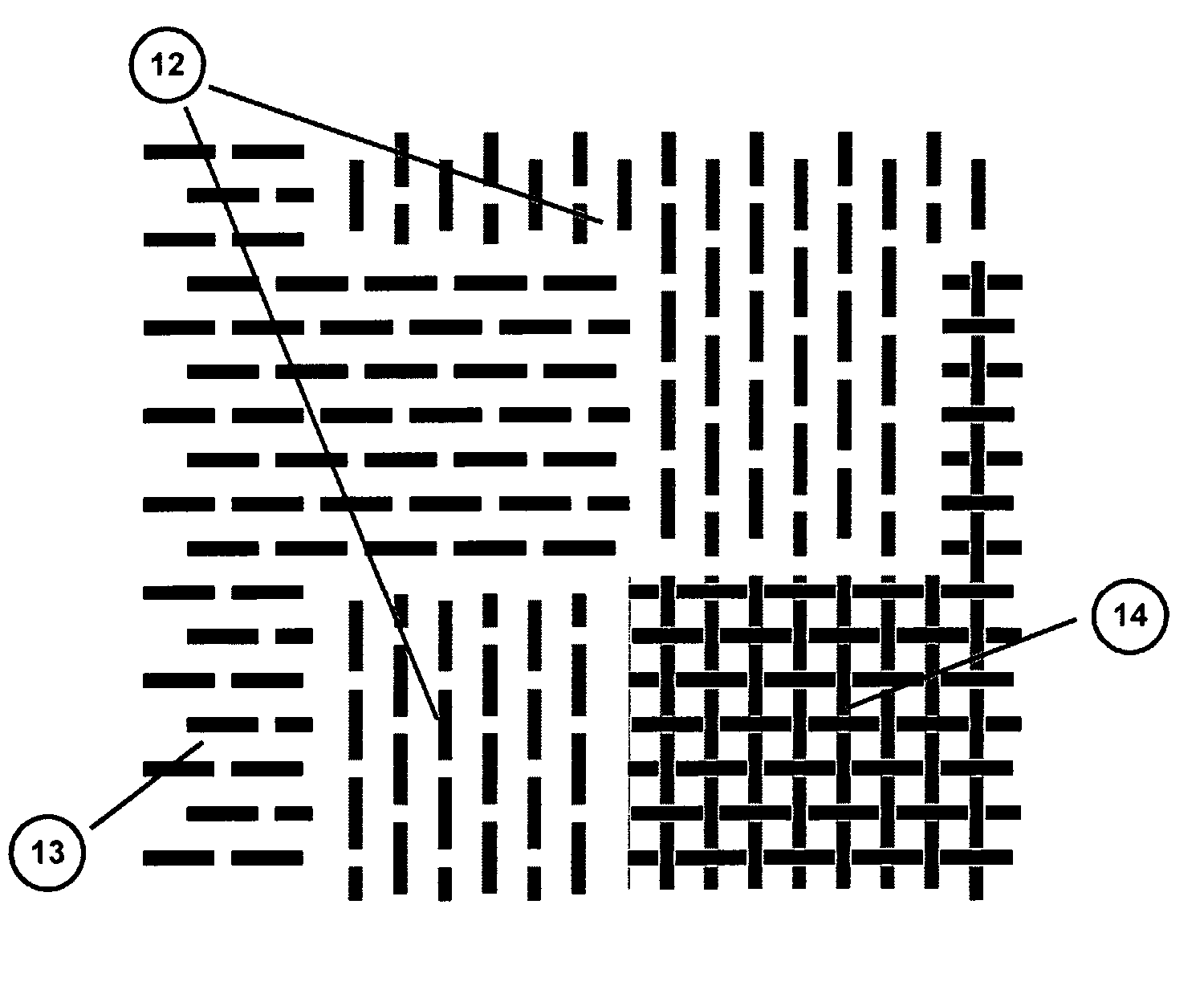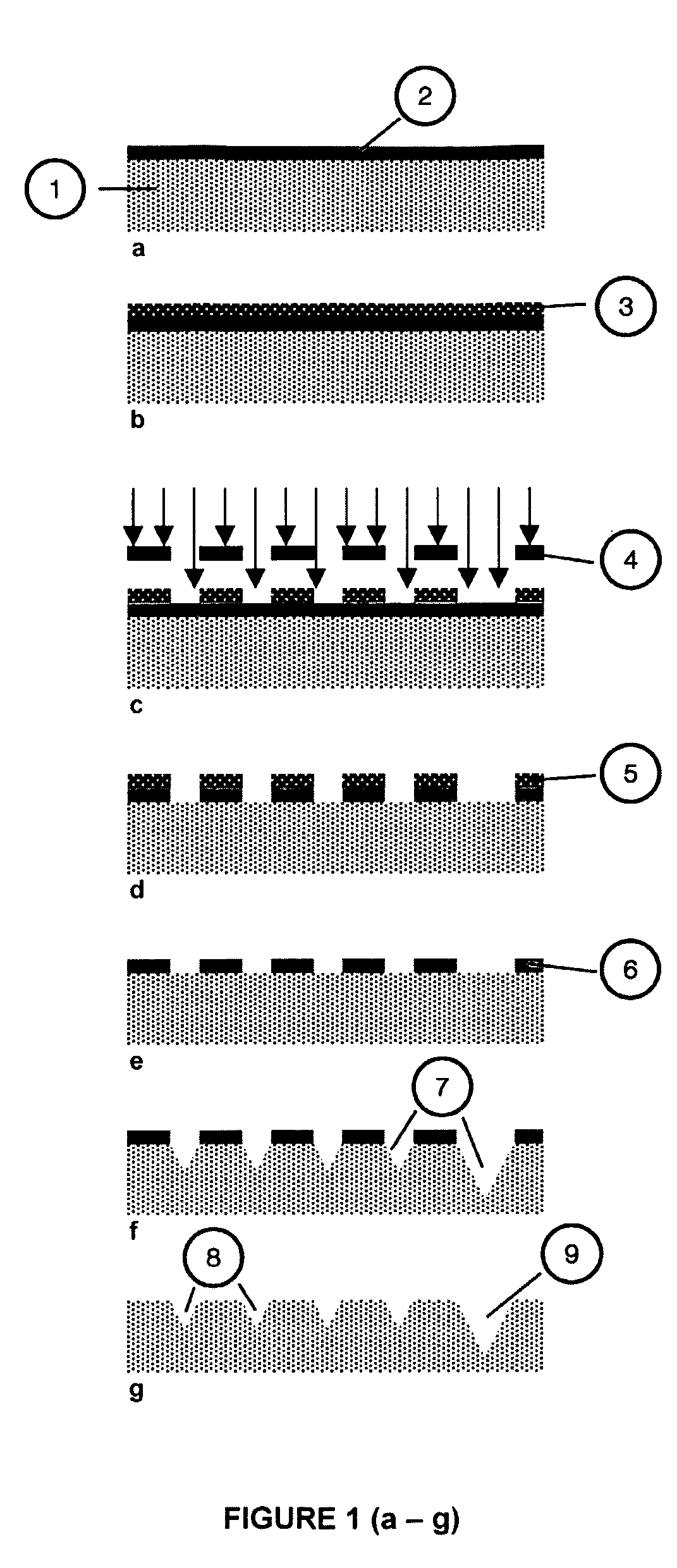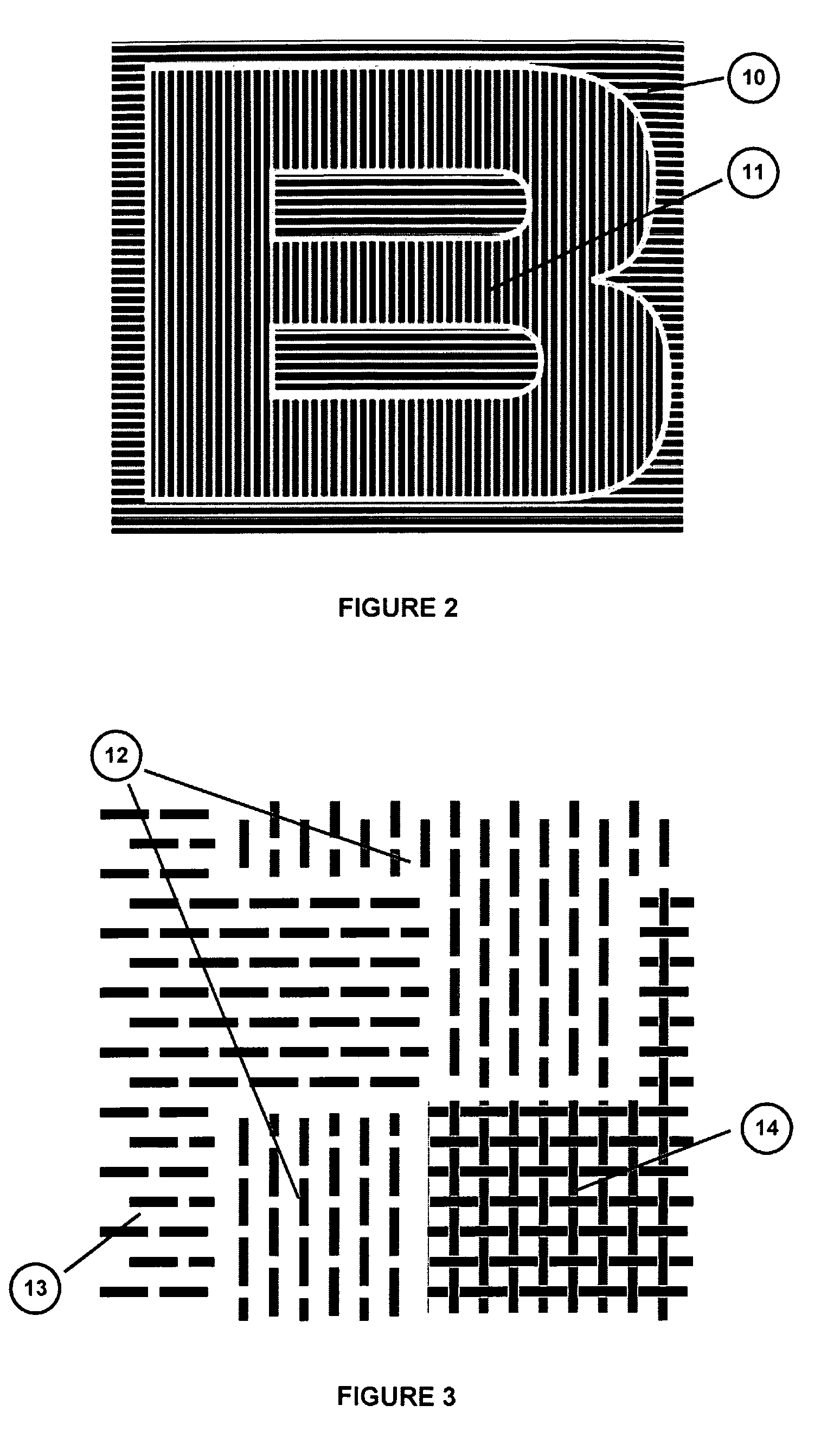Microreplication of transitory-image relief pattern based optically variable devices
a transitory image and relief pattern technology, applied in the field of microreplication, can solve the problems of inability to reproduce using widely available scanning or photocopying equipment, loss of all optically variable characteristics of the original, and characteristic and occasionally undesirable irridescent hu
- Summary
- Abstract
- Description
- Claims
- Application Information
AI Technical Summary
Benefits of technology
Problems solved by technology
Method used
Image
Examples
first embodiment
[0026] In accordance with the present invention, the “single wet etching step” method described above allows the patterning of a Silicon origination shim containing the negative of relief elements, which can be of different depths and which are formed during the same micromachining process. Said relief elements can be disposed spatially at will on the photomask, in such a way that, at the end of the entire process described above, the replicated pattern will consist of distinguishable foreground and background areas which cooperate to form the transitory images described in FIGS. 6,7,8, 12 and 13 of U.S. Pat. No. 4,033,059 or combinations thereof. This first embodiment can also be used to realize transitory image relief patterns based on PRLEs as described in detail below. Finally, the planes forming the sides of the V-groove relief element negatives on the shim, when replicated, form a mirror-like surface which yields a further optically variable contrast-switching effect between ...
third embodiment
[0029] Although wet etching of the bulk Silicon is the preferred method for the structuring of the Silicon origination shim, the wet etching steps described in the previous two embodiments of the present invention can also be replaced, in the present invention, by dry etching of the Silicon substrate using any of several suitable dry etch chemistries well-known in the technical field of Silicon micromachining. One such dry etching chemistry consists of using Sulphur Hexafluoride (SF6) gas plasma. It must be noted however that replicated markings of shims fabricated using dry etching of the Silicon substrate do not exhibit the specular reflection effect previously described for replicas of wet-etched shims.
[0030] In a fourth and final embodiment of the present invention. Micromachining processes very similar to those described above may be used to obtain an origination shim, in materials other than Silicon, containing transitory-image type relief patterns. Indeed a wide variety of ma...
PUM
| Property | Measurement | Unit |
|---|---|---|
| time | aaaaa | aaaaa |
| relief depth | aaaaa | aaaaa |
| relief depth | aaaaa | aaaaa |
Abstract
Description
Claims
Application Information
 Login to View More
Login to View More - R&D
- Intellectual Property
- Life Sciences
- Materials
- Tech Scout
- Unparalleled Data Quality
- Higher Quality Content
- 60% Fewer Hallucinations
Browse by: Latest US Patents, China's latest patents, Technical Efficacy Thesaurus, Application Domain, Technology Topic, Popular Technical Reports.
© 2025 PatSnap. All rights reserved.Legal|Privacy policy|Modern Slavery Act Transparency Statement|Sitemap|About US| Contact US: help@patsnap.com



